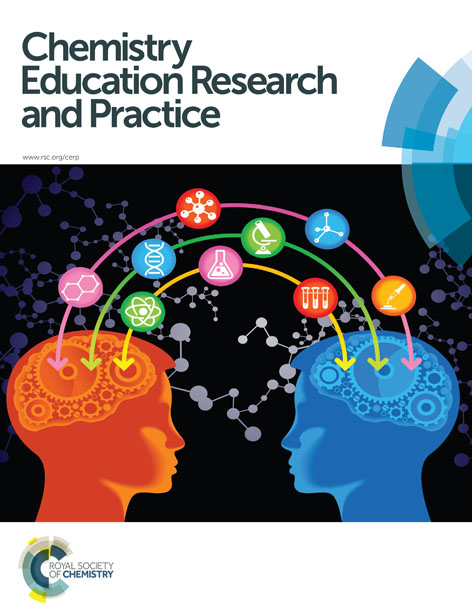Perceived autonomy-support, expectancy, value, metacognitive strategies and performance in chemistry: a structural equation model in undergraduates
Abstract
Research in chemistry education has highlighted a number of variables that predict learning and performance, such as teacher–student interactions, academic motivation and metacognition. Most of this chemistry research has examined these variables by identifying dyadic relationships through bivariate correlations. The main purpose of this study was to simultaneously investigate students' perceptions of teacher–student interactions (autonomy support), motivation (expectancy, importance, utility and interest), metacognitive strategies for problem solving (planning, monitoring and evaluation), and performance in chemistry. Measures were collected from 503 Spanish undergraduates (53.13% females) aged 18 to 36 years. Structural equation modeling (SEM) tested the hypothesized direct and mediated relations between these variables. First, confirmatory factor analysis (CFA) provided evidence of the robustness of the evaluation instruments. Second, perceived autonomy support positively predicted expectancy, importance, utility, interest, planning, monitoring, evaluation and performance in chemistry; motivational variables positively predicted metacognitive strategies and performance; and metacognitive strategies positively predicted performance. Moreover, all hypothesized mediated effects between variables were also supported. We conclude discussing the main findings of this study, highlighting their educational implications, acknowledging their limitations, and proposing lines of future research on chemistry education.

 Please wait while we load your content...
Please wait while we load your content...